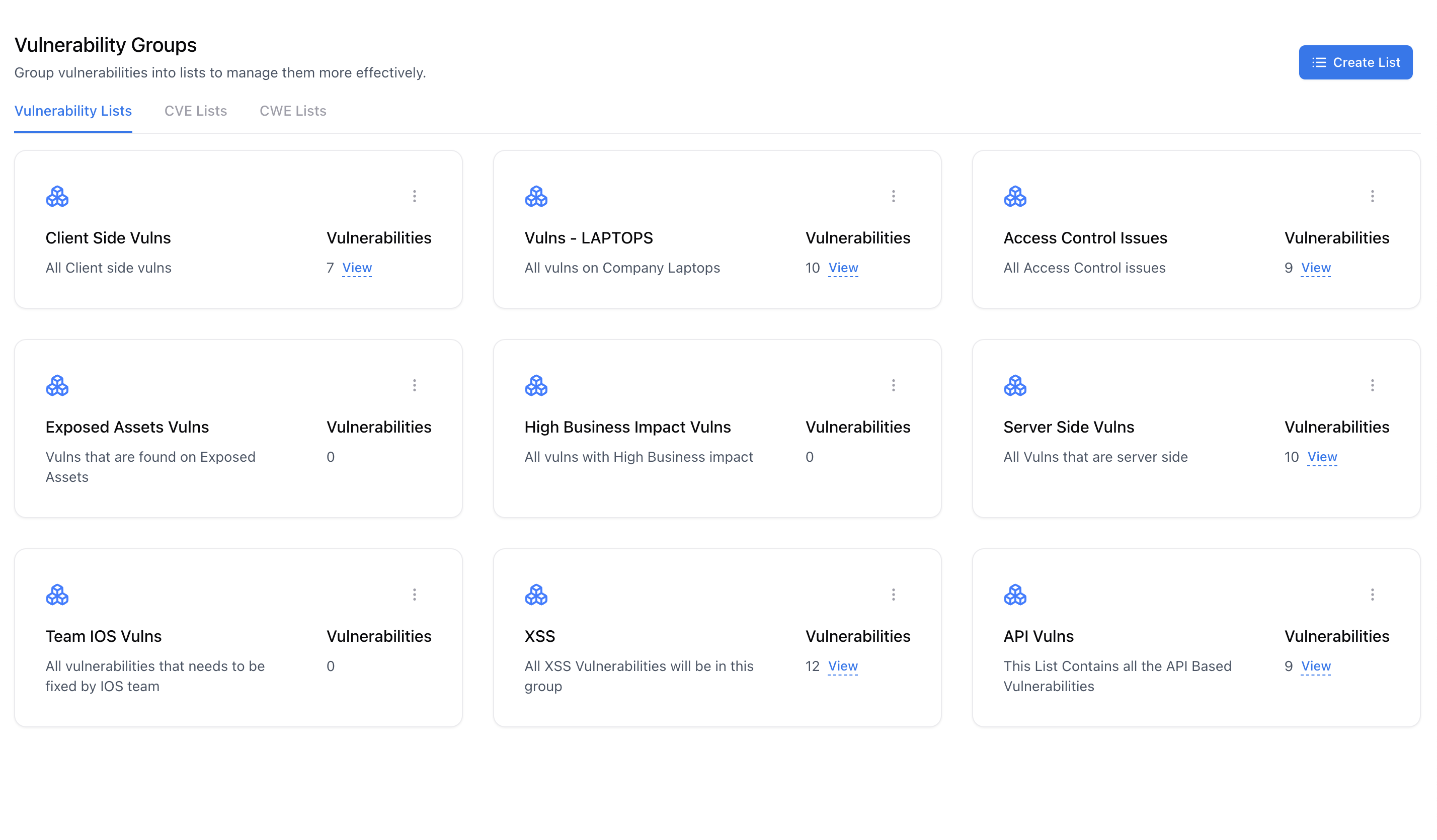
Vulnerability Groups — Manage categorized lists of vulnerabilities
Overview
Vulnerability Groups enable you to organize vulnerabilities from multiple assets, assessments, and sources into logical collections — such as all Access Control issues or API-related vulnerabilities.This helps teams prioritize fixes, track themes, and export consolidated reports with ease. Groups can be defined by vulnerability types, impacted components, responsible teams, or business context. They act as dynamic workspaces to simplify remediation management across large vulnerability datasets.
Use Cases
- Group all Access Control or Authentication issues across multiple systems.
- Maintain separate vulnerability lists per team or department.
- Create category-based views (e.g., API Vulnerabilities, Web XSS Issues, Encryption Weaknesses).
- Generate consolidated reports for specific vulnerability families.
Creating or Updating a Group
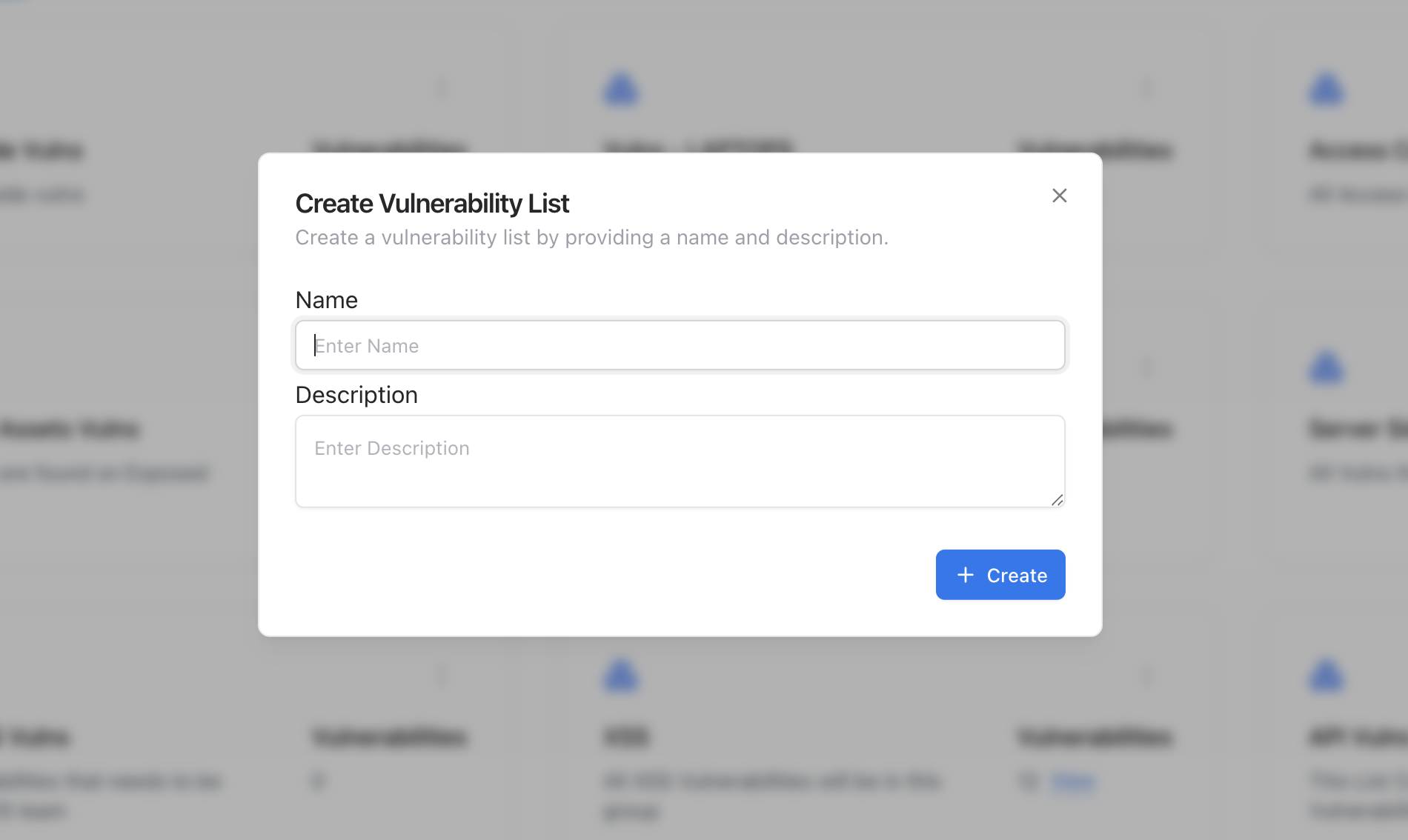
Vulnerability Groups — Manage categorized lists of vulnerabilities
Open Vulnerability Groups
Click ‘Create Group’
Save Group
Updating a Group
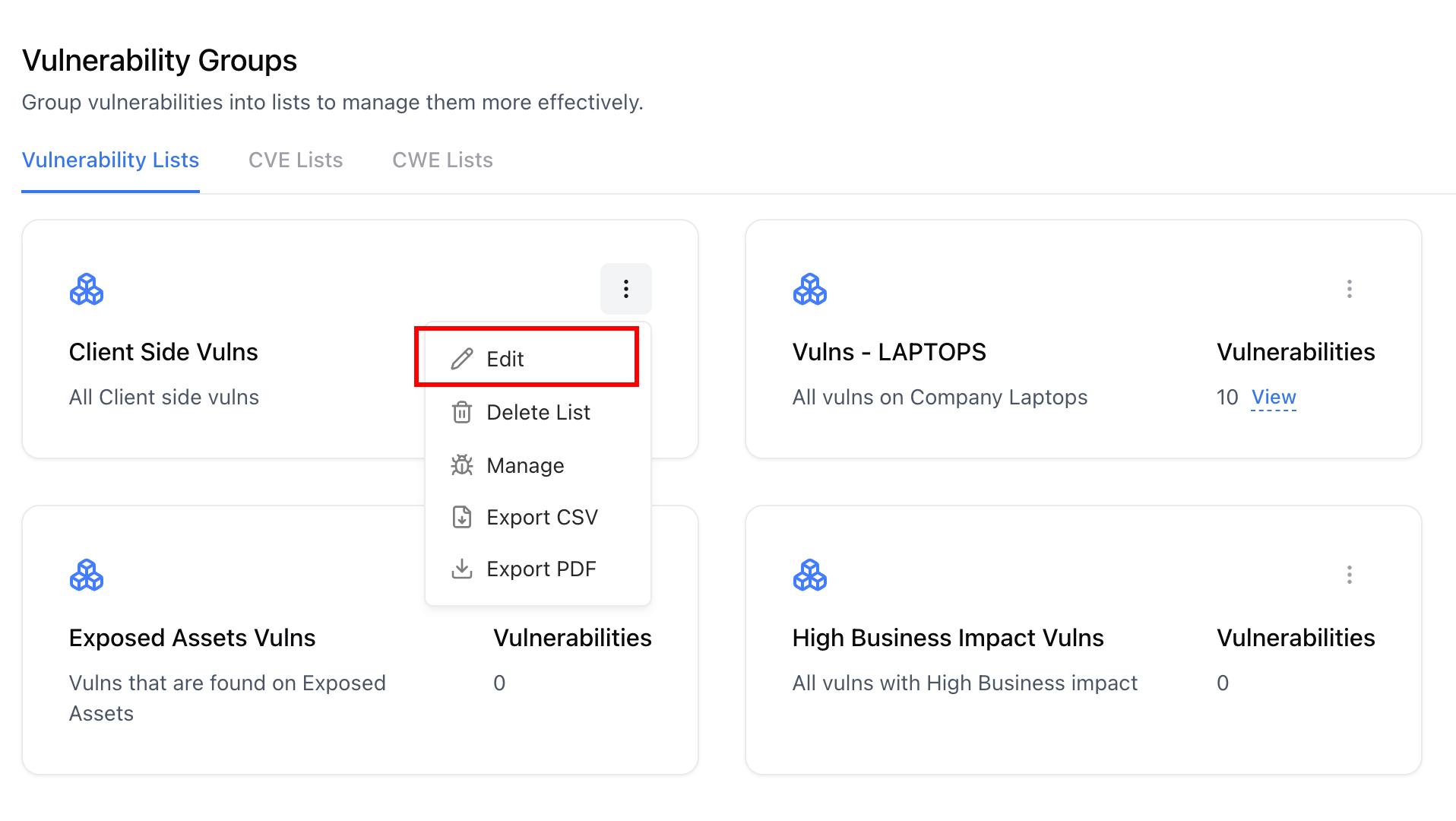
Creating and managing vulnerability groups
Viewing Vulnerabilities in a Group
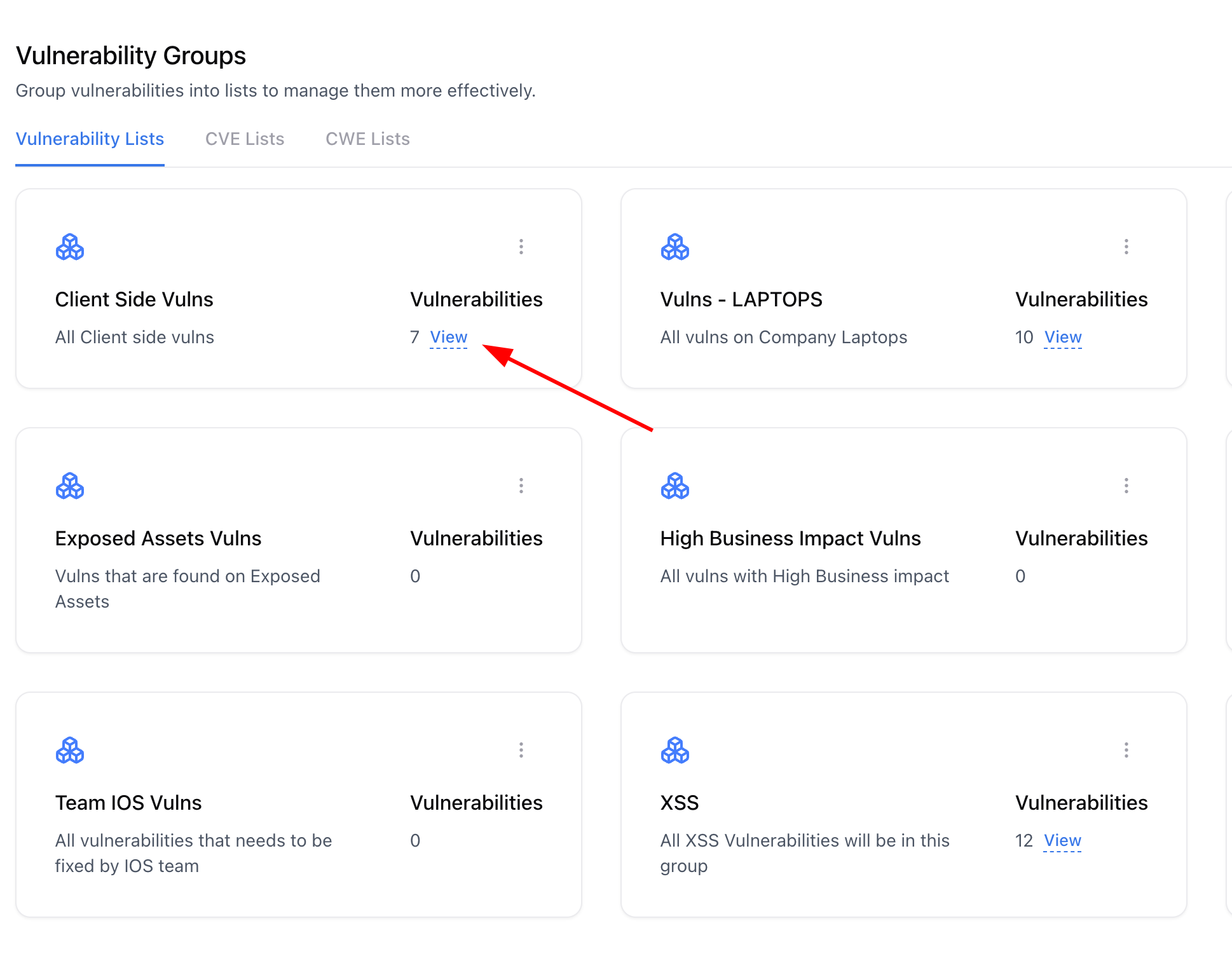
Vulnerability Groups — Manage categorized lists of vulnerabilities
Select a Group
Review Grouped Vulnerabilities
Drill Down
Adding or Removing Vulnerabilities

Vulnerability Groups — Manage categorized lists of vulnerabilities
Manage Group
Add Vulnerabilities
Remove Vulnerabilities
Auto-Sync Option (optional)
Exporting Group Data
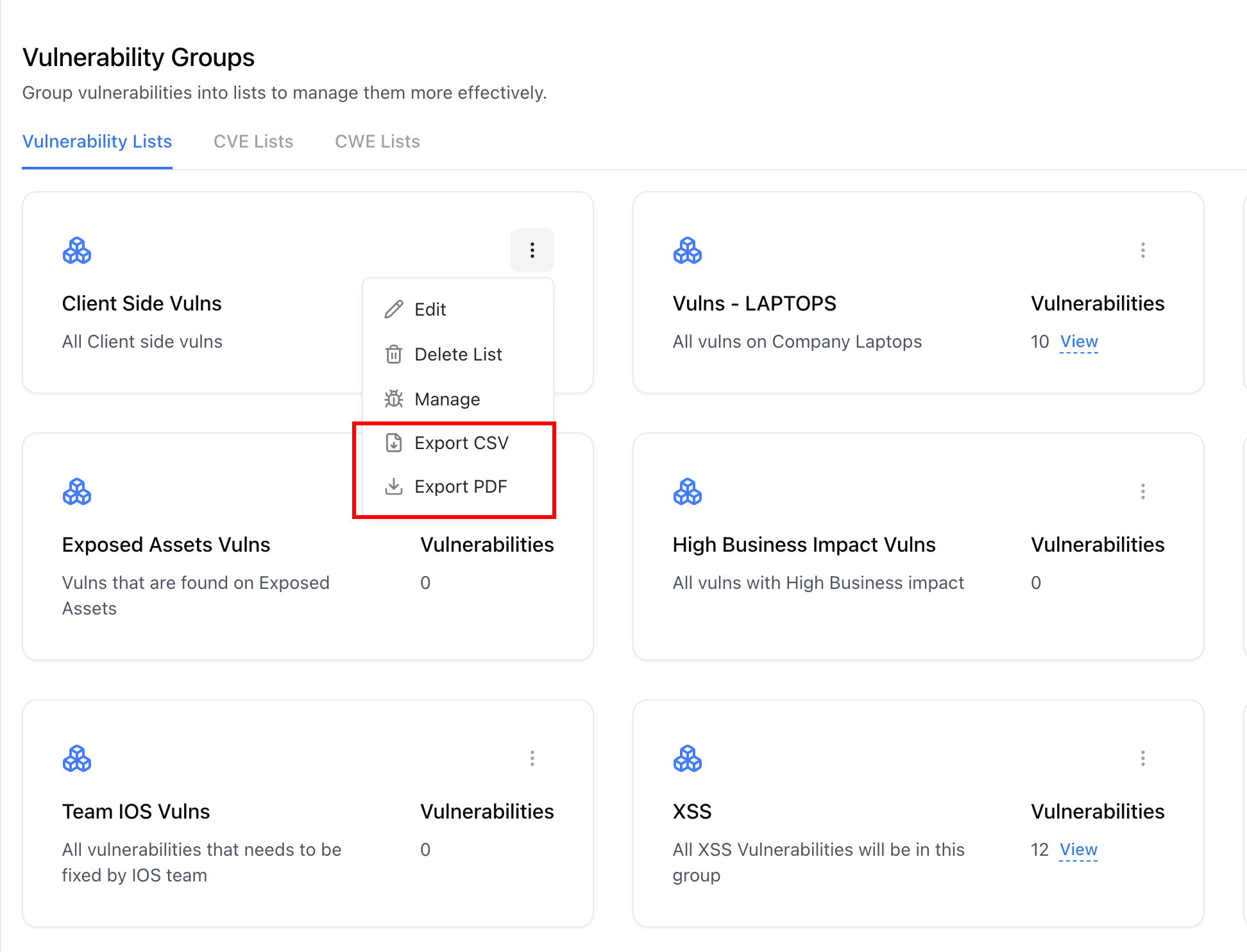
Vulnerability Groups — Manage categorized lists of vulnerabilities
Export CSV
Open the Group Menu
Select ‘Export CSV’
Export PDF Report
Select ‘Export PDF’
Download the Report
Best Practices
- Create functional groups (e.g., API Issues, Auth Flaws) to align with engineering teams.
- Use CSV exports for bulk remediation tracking in external tools.
- Use PDF exports for client reporting or audit documentation.
- Review and refresh groups regularly to ensure updated vulnerability context.